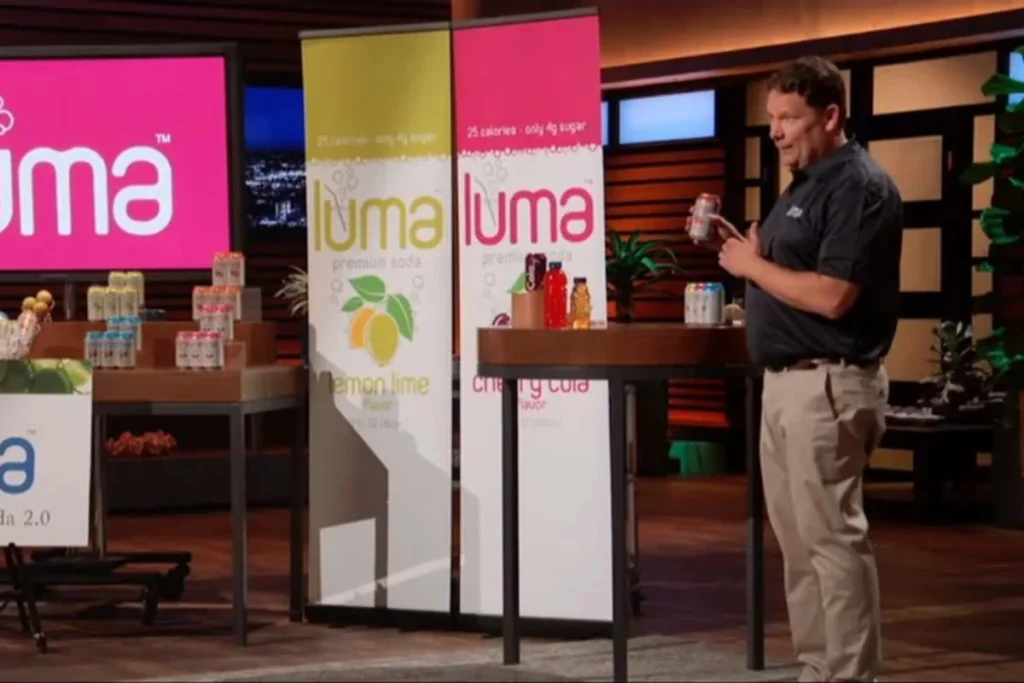What happened to Luma Soda after appearing on Shark Tank Season 10? Despite a promising start and a passionate founder, Luma Soda ultimately failed to secure a deal on Shark Tank Season 10. The Sharks were concerned about the company’s low sales, high price point, and lack of repeat customers. Although the company continued for a while after the show, it eventually ceased operations in 2021 and Jim Otteson returned to his law practice.
Summary
- Luma Soda was a healthy soda company founded by Jim Otteson.
- It was made with natural sugars and aimed to be a better alternative to diet sodas.
- Luma Soda appeared on Shark Tank Season 10, seeking $500,000 for 20% equity.
- The Sharks were impressed with the product but had concerns about low sales and high price.
- Luma Soda did not secure a deal on Shark Tank.
- The company eventually went out of business in 2021.
Luma Soda Shark Tank Update | Shark Tank Season 10
Luma Soda was a brand of naturally sweetened, low-calorie sodas. It was created by Jim Otteson, a former trial attorney who wanted a healthier alternative to traditional diet sodas.
Despite a promising concept and a passionate founder, Luma Soda ultimately fizzled out after failing to secure an investment on Shark Tank and facing challenges in the competitive beverage market.
The Story of Luma Soda
Jim Otteson, a long-time trial attorney, was a self-proclaimed diet soda addict. Concerned about the artificial sweeteners and chemicals found in traditional diet sodas, he set out to create a healthier option.
He wanted a soda that tasted great, had few calories, and used natural ingredients. This led him to develop Luma Soda, sweetened with monk fruit and honey.
Jim Otteson’s Vision
Otteson envisioned Luma Soda as a premium, healthy soda that would appeal to health-conscious consumers.
He believed that people were looking for a delicious, guilt-free alternative to traditional sodas loaded with sugar or artificial sweeteners.
His goal was to make Luma Soda widely available and change the way people thought about soda.
Luma Soda on Shark Tank
1. The Pitch
| Entrepreneurs | Jim Otteson |
|---|---|
| Business | Luma Soda – Naturally sweetened, low-calorie soda |
| Ask | $500,000 for 20% equity |
| Deal | No deal |
| Sharks | Mark Cuban, Kevin O’Leary, Lori Greiner, Robert Herjavec, Barbara Corcoran |
| Season – Episode | Season 10 Episode 19 |
| Original Air Date | April 14, 2019 |
| Website | Jim Otteson |
| Key Points of Pitch |
|
| Why Sharks Declined |
|
2. The Sharks’ Concerns
The Sharks were initially intrigued by Luma Soda’s concept and Otteson’s passion. However, they quickly raised concerns about the company’s financial performance.
The low sales figures, combined with the high price point and low reorder rate, made them hesitant.
They also worried about the challenges of breaking into the competitive beverage industry, especially given the dominance of established brands.
3. The Outcome
Despite Otteson’s best efforts to convince the Sharks of Luma Soda’s potential, he was unable to secure a deal.
The Sharks ultimately decided that the company was too risky an investment, given its financial challenges and the competitive landscape.
Luma Soda After Shark Tank
1. The Company’s Struggles
Despite not securing a deal on Shark Tank, Jim Otteson remained determined to make Luma Soda a success. He continued to operate the company, hoping to increase sales and gain wider distribution.
However, Luma Soda faced several challenges:
- High Price Point: The cost of producing a naturally sweetened soda with premium ingredients was high, leading to a higher retail price than many competitors. This made it difficult to attract price-sensitive consumers.
- Limited Distribution: Luma Soda was primarily sold online, limiting its reach and visibility. It struggled to gain shelf space in major grocery stores, hindering its ability to reach a wider audience.
- Competition: The beverage market is incredibly competitive, dominated by major players with extensive resources and established distribution networks. Luma Soda found it difficult to stand out and compete against these giants.
- Changing Consumer Preferences: While health-conscious consumers were increasingly seeking healthier options, the market for naturally sweetened sodas was still developing. Luma Soda may have been ahead of its time, facing challenges in educating consumers about the benefits of its product.
2. The Demise of Luma Soda
Despite Otteson’s efforts, Luma Soda was unable to overcome these challenges. Sales remained sluggish, and the company struggled to gain traction in the market.
Eventually, the financial strain became too much, and Luma Soda was forced to cease operations in 2021.
Jim Otteson returned to his law practice, marking the end of his entrepreneurial journey with Luma Soda.
Lessons Learned
Luma Soda’s journey, though ultimately ending in closure, offers valuable lessons for aspiring entrepreneurs, particularly those interested in the food and beverage industry.
1. The Challenges of the Beverage Industry
Luma Soda’s story highlights the significant hurdles faced by new entrants in the beverage market.
- Established Competition: Major brands dominate shelf space and consumer awareness, making it extremely difficult for newcomers to gain a foothold.
- Distribution Networks: Getting your product into stores and into the hands of consumers requires access to complex and often costly distribution networks.
- Price Sensitivity: Consumers are accustomed to certain price points for beverages, making it challenging to introduce a premium-priced product, even with superior ingredients and health benefits.
- Shifting Trends: The beverage landscape is constantly evolving, with new trends and consumer preferences emerging regularly. Staying ahead of the curve and adapting to these changes is crucial for survival.
2. The Importance of Market Demand
Luma Soda, while innovative, may have struggled because it was ahead of its time. The demand for naturally sweetened, healthy sodas, while growing, was not yet mainstream. This highlights the importance of:
- Market Research: Thoroughly understanding your target market, their needs, and their willingness to adopt new products is essential.
- Product-Market Fit: Ensuring that your product aligns with existing or emerging market demand increases the chances of success.
- Pricing Strategy: Finding the right balance between pricing that reflects the value of your product and pricing that is competitive within the market is crucial.
- Marketing and Education: Effectively communicating the benefits and value proposition of your product to consumers can help drive demand.
Luma Soda’s experience serves as a reminder that even with a great product and passionate founder, success in the beverage industry requires careful planning, strategic execution, and a deep understanding of the market.
FAQs
What was Luma Soda?
Luma Soda was a brand of naturally sweetened, low-calorie sodas, created as a healthier alternative to traditional diet sodas. It was made with monk fruit and honey, and came in four flavors: Cola, Cherry Cola, Lemon/Lime, and Blood Orange.
Why did Luma Soda fail?
Luma Soda faced a number of challenges, including a high price point, limited distribution, intense competition in the beverage market, and potentially being ahead of the curve in terms of consumer demand for naturally sweetened sodas.
Is Luma Soda still in business?
No, Luma Soda is no longer in business. The company ceased operations in 2021.
What can entrepreneurs learn from Luma Soda?
Luma Soda’s story highlights the importance of careful planning, market research, and understanding the challenges of the beverage industry. It also emphasizes the need for a strong product-market fit and effective pricing and marketing strategies.
The Bottom Line
Luma Soda’s journey, while ultimately ending in closure, provides a valuable case study for entrepreneurs. It demonstrates the challenges of entering a competitive market like the beverage industry, even with a good product and a passionate founder.
Luma Soda’s story underscores the importance of thorough market research, strategic planning, and adapting to evolving consumer preferences. While the brand itself may be gone, the lessons learned from its experience can help guide other entrepreneurs on their own paths to success.








